Review: Alcatel Idol 5 for Cricket Wireless
Oct 31, 2017, 6:00 AM by Eric M. Zeman
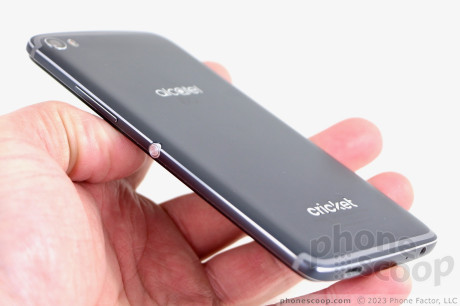
Alcatel's mid-range Idol 5 is a bargain for prepaid Cricket's subscribers. It combines an attractive metal-and-glass design with a near-stock version of Android Nougat and special features such as a customizable action key and stereo speakers. Here is Phone Scoop's in-depth report.
Hardware
Is It Your Type?
The Idol 5 is Alcatel's 2017 affordable flagship handset. It's a well-designed, well-manufactured, mid-sized piece of hardware that delivers a simple Android experience. If you're a Cricket Wireless prepaid customer, the Idol 5 is a clear step-up from the plastic stuff that lines the entry-level shelves.
Body
The Alcatel Idol 5 carries over many of the basic design and hardware components we've seen on the Idol series since the 2015 Idol 3. The Idol 5 is a compelling handset that should appeal to people who want something better than low-end fare, but find an iPhone or Galaxy S too pricey. The Idol 5 offers a near-premium experience at less than one-third the cost of today's flagships.
The phone is assembled from metal and glass components. Due to its shape and size, it almost looks like the front glass panel is resting on top of the metal chassis, as if it were a piece of fine cheese complementing a juicy hamburger. The metal chassis has a dark, metallic bluish-gray hue that I rather dig. The side edges of the metal chassis are chamfered so they produce a nice, chrome sheen. Chrome accents alight some buttons and other components to complete the classy, dressed-to-kill design. The surface of the rear curves just a bit as it reaches the side edges, helping reduce the footprint for better hand fit.
When compared to today's big-screened flagships, the Idol 5 looks downright compact. It is about the same size as the smaller iPhone 8 and Galaxy S8, just for the sake of comparison. It's a comfortable 5.83 inches tall by 2.83 inches wide. I really like the size, which is ideal for those with smaller hands. It's really easy to hold and use, as well as stuff into pockets. It's smooth enough that retrieving it from most pockets is no problem.
Alcatel worked with fine materials in building this phone. The rear chassis feels strong. I like the weight of the metal, which is a single piece that wraps around and forms the sides of the phone. The top and bottom edges are bowed, which adds strength. The glass is Gorilla Glass 3; it may not be quite as strong as today's Gorilla Glass 5, but it should still be good enough to protect against most scratches, scrapes, and bumps.
The Idol 5's face is nearly all black thanks to the glass panel that fills the majority. The glass stretches from side-to-side, but the metal framing extends a bit above and below the glass and contains the Idol's iconic stereo speakers. The speaker grilles are drilled into the metal frame and were left unpainted; this means they catch and reflect light, making them highly visible nearly all the time. The glass itself has the slightest of curves where it fits into the slimmest plastic band.
You'll find the screen lock button high on the left side of the phone, practically at the top. I prefer for the screen lock button to be on the right side and found the Idol 5's key hard to find and use. The button does have a good profile, and travel and feedback are pretty good. The volume toggle, positioned on the right edge of the phone, has a similar profile and travel and feedback.
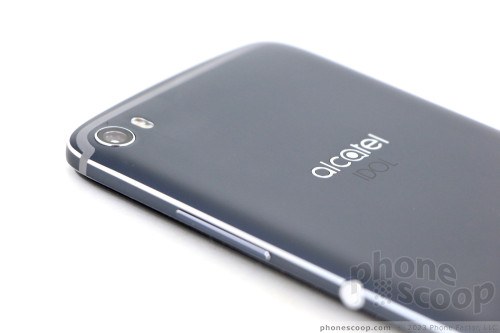
The Idol 5 carries over Alcatel's "Boom Key", now called the "Now Key". It's a round button placed smack in the middle of the right edge of the phone, right where the screen lock button should be. On the Idol 5, the Now Key can be configured to launch one of several apps. The button itself has an unmistakeable profile and perfect travel/feedback.
The combined SIM card / memory card tray is tucked into the left edge of the phone, while the stereo headphone jack is on the bottom, as is the USB-C port. The phone isn't water-resistant, nor rugged in any way.
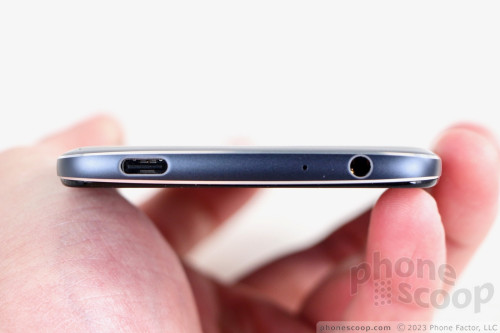
The back cover, pretty as it is with that nice metallic finish, cannot be removed. You won't be able to swap out batteries. The round camera module is located in the far upper left corner of the back side, with the two-tone flash close by. The Alcatel and Cricket logos are hard to miss.
Alcatel did a fine job crafting this mid-sized marvel. It's a compact, attractive handset that offers an experience far above its price point.
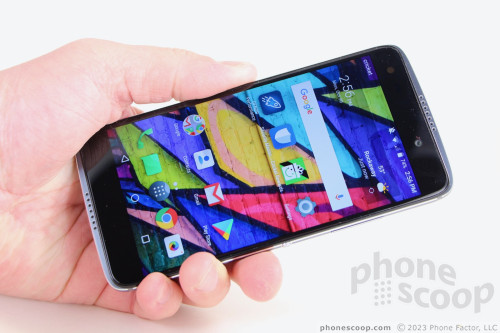
Screen
The 5.2-inch LCD panel offers full HD resolution. This is a great size/resolution combination, as it offers some 424 pixels per inch. It's incredibly sharp; individual pixels are entirely invisible. The screen is also bright, colorful, and accurate. The oleophobic coating on the glass does its job well, mostly keeping fingerprints and grime away. Even so, I found the screen succumbed to glare outdoors. Indoor visibility is fantastic, but it can be heard to see outside at times. Viewing angles are good, with minimal change in brightness and no change in color.
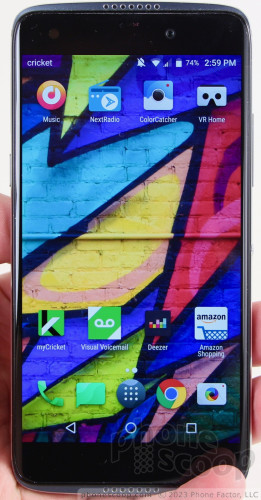
The LCD panel and HD resolution mean the Idol 5 is not the best VR candidate, but that hasn't stopped Alcatel from creating a special VR headset for the phone. The UNI 360 Goggles, which are available separately, function a lot like Google Cardboard. The phone comes with a single VR app called vTime. It runs pretty slowly, and there are lots of obvious pixels when viewing VR content through the viewer.
Signal
Cricket Wireless is owned and operated by AT&T, which means the Alcatel Idol 5 actually runs on AT&T's LTE 4G network. I tested it around the New York City metro area and found it performed on par with other Cricket-branded phones.
I'll remind Cricket customers once again that AT&T limits Cricket handsets to maximum mobile data speeds of 8 Mbps. With that in mind, the Idol 5 held onto AT&T's LTE network everywhere I took it, and was able to consistently hit those maximum speeds. Bottom line: the Idol 5 performed as quickly as Cricket allows it to. I didn't run into any trouble streaming low-quality music over the network, but watching YouTube videos (even standard resolution) via LTE led to some buffering and waiting. Browsing the web and social media apps was mostly smooth.
The phone connected nearly all calls on the first dial and dropped just one when in a moving car.
Sound
I'd rate the Alcatel Idol 5 a mediocre phone for holding conversations. The earpiece is neither as clear nor as loud as I want it to be, but it suffices on most occasions. For example, I had no trouble maintaining calls at home and in other quiet spaces, such as an office with a closed door. I had a harder time hearing calls in public spaces, such as coffee shops and city streets. Calls in the car were very hard to hear. The speaker was prone to distortion when set all the way up. People said I sounded "just okay" when I spoke to them via the Idol 5.
The speakerphone delivers an equivalent performance. It's average in every way. You'll find it works well when you're in private spots, but it suffers when you're out in the world. It's really hard to hear in a moving vehicle, and cranking the volume introduces a lot of distortion.
Ringers and alert tones managed to get my attention when necessary.
Curiously, the stereo speakers, when used to blast music or watch YouTube videos, sound amazing. The phone's internal amplifiers do a good job delivering clear, full sound that's loud enough to fill a room with your favorite soundtrack. The Idol series has always boasted this feature, and the Idol 5 delivers the goods when it comes to personal entertainment.
Battery
Alcatel put a mid-sized 2,850 mAh battery into the compact Idol 5. The phone can push through a single day, but it does come close to giving up the ghost by bedtime. I noticed the battery had dipped below 20% by the time I was ready to call it a day. More than once the phone was close to 10% at the end of the day after heavy use. You'll have to pay attention to the phone's battery life throughout the day, and I wish that weren't the case.
The phone includes the basic Android battery saver tool, which can be set to come on automatically or toggled on/off whenever you need. It helps a little bit.
The Idol 5 supports rapid charging and the included charger will power it up relatively quickly. The phone does not support wireless charging due to the metal chassis.
Bluetooth, GPS, NFC, WiFi
Bluetooth functions well enough. The phone paired with a range of Bluetooth accessories, including headsets, speakers, and my car. The device delivered average quality calls through headsets, but terrible call quality through my car's hands-free system. Music sounded decent via Bluetooth speakers, though in some cases you may be better served using the built-in sonic cannons.
I had no trouble using the Idol 5's NFC radio. It supports Android Pay, and that's a good thing.
Using Google Maps, the Idol 5 was able to field my general location in several seconds. It took closer to 10 seconds to truly lock down my exact location, and accuracy was never better than about 25 feet. That's pretty good, but I've seen better. Google Maps worked well enough as a real-time navigation tool, but it sometimes lagged my actual location when traveling at highway speeds.
The WiFi radio worked very well.
Software
Lock Screen
The Idol 5's lock screen strays only a little bit from the stock Android handset. It includes up to five app shortcuts at the bottom of the lock screen, rather than the usual two. You can fully customize which apps appear at the bottom of the screen, which is nice. Alcatel calls these "Func shortcuts" and has a whole UI for adjusting them. You can turn them off completely if you wish. Tap the shortcut you want to open, unlock, and the phone opens the app quickly.
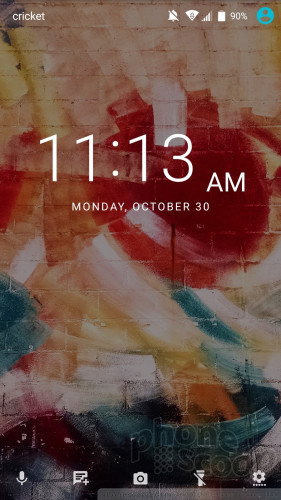
There is no advanced active / ambient display on the Idol 5. You have to wake the screen (pressing the weirdly-located screen lock button on the left edge) to see notifications, which appear below the clock. You can dismiss notifications one at a time from the lock screen, or en masse if you unlock the phone. The clock is really big and easy to see.
Security options are limited to PIN, pattern, and password; there's no fingerprint reader. The Idol 5 does support the Android Smart Lock tools, which you can configure to keep the phone unlocked when you're at home, for example.
Last, the Idol 5 supports lockable files and folders. You'll have to use a PIN or password, but it's a nice option to have, if you want to prevent easy access to sensitive stuff.
Home Screens
I appreciate Alcatel's move to adopt the stock Android experience on its most recent smartphones.
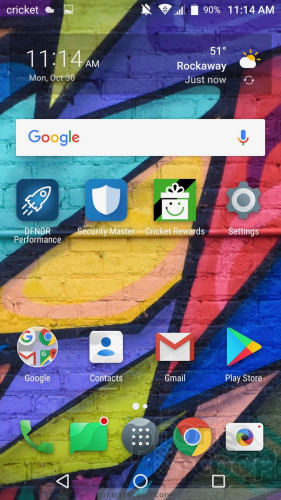
On the Idol 5, home screens, the quick settings shade, app drawer, and settings menu all look and act like they do on Android 7.0 as designed by Google. The one obvious change I noticed is that the app drawer allows you to rearrange the apps however you prefer, as well as easily delete them. That's a nice addition.
The Idol 5 has one neat trick up its sleeve: the UI is reversible. In other words, no matter which way you hold the phone, the user interface reorients itself so you're not looking at everything upside-down. This is a signature feature of the Idol series. If you do hold the phone upside down, the side buttons are even harder to reach and more awkward to use. This is particularly true of the screen lock button, which is now in the very bottom corner on the right. You can turn this feature off if you want. It is useful, however, for answering phone calls. Thanks to mics and speakers at both ends, there's no wrong way to answer a call on the Idol 5.
Then there's the Now Key, which is fully customizable. By default, pressing it opens the Func app. Basically, three app shortcuts will pop out, forming a semicircle on the screen next to the button itself. They are the flashlight, camera, and calculator, but you can configure which three Func apps appear. Alternately, you can map the button to open a single application, such as the camera. Last, you can turn the Now Key off entirely.
Performance is middling at best. The Idol 5's 2.4 GHz MediaTek Helio P20 processor struggles a lot with processor-intensive tasks, such as downloading and installing apps from the Play Store. The meager 2 GB of RAM doesn't help. I'd like to see much quicker performance from this device, but it doesn't quite deliver. My guess is owners will sometimes find themselves frustrated with the Idol 5's lack of spritely speed.
Camera
The Idol 5's camera opens quickly enough, but the app runs somewhat sluggishly. I found it mildly frustrating to use.
The camera interface is crammed with stuff, especially on the right side. Pressed up against the viewfinder you'll see a (sideways) scrollable list of shooting modes called out in text, sort of like the iOS camera. There there are four buttons (front camera, filters, shutter, camera roll), followed at the far right edge by the Android nav buttons. It's too many buttons jammed into too small a space.
The controls on the left include the flash (on, off, or auto), the timer, HDR (on, off, or auto), and the shooting modes.
The Idol 5 includes a significant number of shooting modes, but the interface is terrible. No matter how you happen to be holding the phone, the UI for selecting the shooting mode is displayed in portrait. This bugs me a lot. The modes include slow-mo, video, photo, pano, manual, micro-video, 360 pano (like Photo Sphere), cinemagraph, insta-collage, and light trace.
Like the iOS camera app, each of these modes is accessed by swiping the viewfinder back and forth. It's incredibly slow to switch shooting modes. You can customize which four are accessible from the camera's main viewfinder, which is a nice touch. Most of the modes work as you'd expect them to.
Manual mode allows you to adjust focus, white balance, exposure, shutter speed (up to 1/4 of a second) and ISO.
Micro-video lets you create a longer video from a series of shorts. Using the UI, you dial in either 15 or 60 seconds of capture time and you have to hold the video button down to snag the video. After you've assembled some clips, you can edit them to publish a longer work. It's fun and clearly aimed at Instagram/Snapchat-driven creative types.
Instant collage allows you to take several pictures and put them together into a single image. (Sort of like Layout from Instagram.) There are five options: two vertical photos together, two horizontal photos together, three horizontal photos, three vertical photos, and four photos arranged in a grid. Like Layout, the final image is square in shape. I like this option.
Last, the Light Trace mode would seem to make up for the manual mode's limited shutter speed range. It's specifically meant to help create longer exposures, to capture nighttime cityscapes, light trails, and the like. You can also use it during the day to capture moving water, etc.. It takes some practice to master. I highly recommend a tripod or something similar.
Speed is the camera's biggest problem. It's a hair too slow to do everything: focus, shoot, save images, adjust modes, etc.
Photos/Video
The Idol 5 has a 12-megapixel main camera and it's decent for this class of device. Basics such as exposure, focus, and white balance are generally accurate. Sometimes one of these three will be a bit off, but not by too much. If anything, it's likely to be exposure. Even with the HDR setting on, the Idol 5 had a hard time balancing contrast-y environments. Outdoors, when you have plenty of light, you're more apt to obtain good shots.
If you're a Snapchat fanatic or selfie lover, the Idol 5 does just well enough to get the job done. The 8-megapixel front camera is fairly good at snagging selfies, though they often tend to be a bit soft with respect to focus. The front camera does manage to do well with exposure and white balance. The screen-based flash is helpful when shooting in really dark spaces.
The Idol 5 can record video up to full HD, and it does a pretty steady job of it. The videos I captured were properly exposed, showed good color, and came across sharp.
I'd call the Idol 5 ideal for everyday photography, particularly for casual users, but it's not the best option for advanced photo buffs.
Alcatel / Cricket Stuff
The most noteworthy app is Color Catcher. Using the camera, you can capture colors in your environment and the Color Catcher app will automatically generate a theme based on that color. It actually works really well. I tested on a red Solo cup and it created the perfect red theme. Beyond the color-matching trick, Color Catcher also manages themes, widgets, icons, wallpapers, and other tools you might use to customize the phone.
Cricket includes its Deezer service. Deezer works pretty well. $6 per month gets you unlimited music streaming on your Cricket phone. If you don't mind paying $10 per month, you'll gain things like offline playback and access from more devices. The service has millions of songs and a pretty good user interface.
Wrap-Up
Alcatel did a fine job with the Idol 5. The handset is attractive, made from quality materials, and delivers the right mix of value for the dollar.
I'm keen on the metal chassis and svelte glass that give the Idol 5 its classy personality. The full HD display is very pretty. I wish data performance were a little better and calls sounded cleaner, but the stereo speakers are great for music and video. Battery life is adequate.
The Android interface is really nice, and Alcatel added some cool twists with the reversible user interface and more flexible Now Key. The camera app offers some powerful tools and yet the under-powered processor and limited RAM cause it to stumble a bit. Thankfully the pictures look pretty good.
The Alcatel Idol 5 finds itself in an odd spot in Cricket's lineup. Most Cricket devices range between $50 and $150. The Idol 5 is the most expensive non-flagship at $200. If you prefer a compact metal design to a large plastic one, the Idol 5 delivers big. You can eke out a bit more performance from the less expensive ZTE Blade X Max, but you'll lose some portability.
I'd recommend the Idol 5 to those who idolize a premium feel on a budget.

Comments
No messages


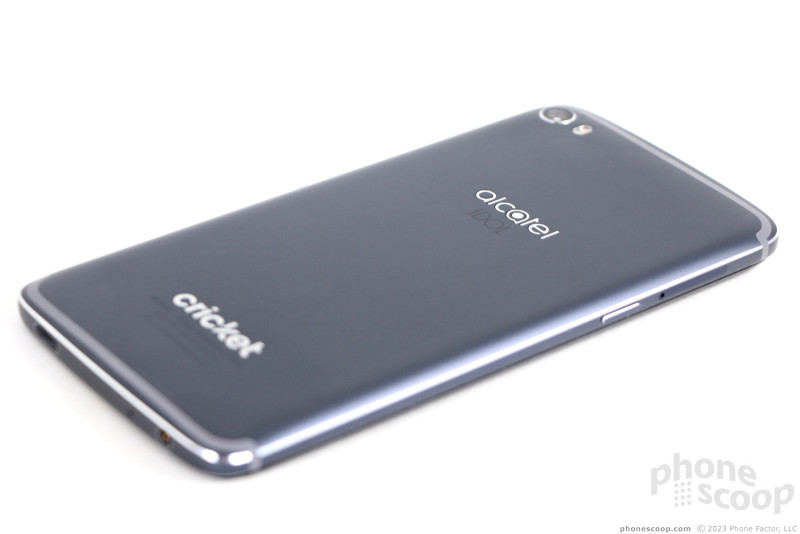



















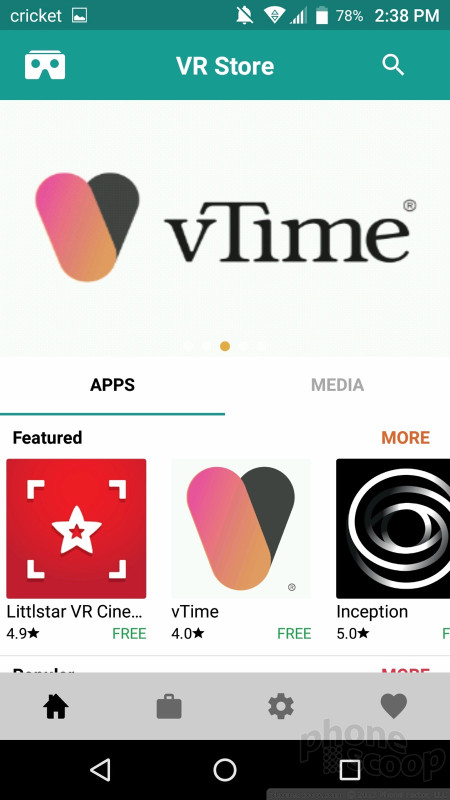










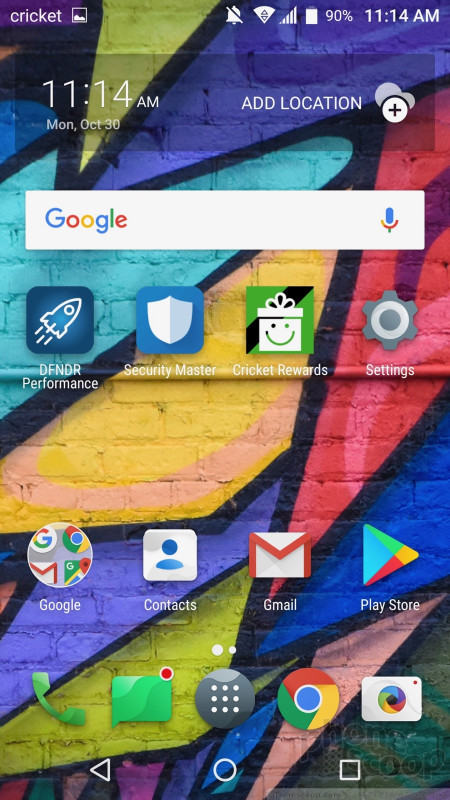







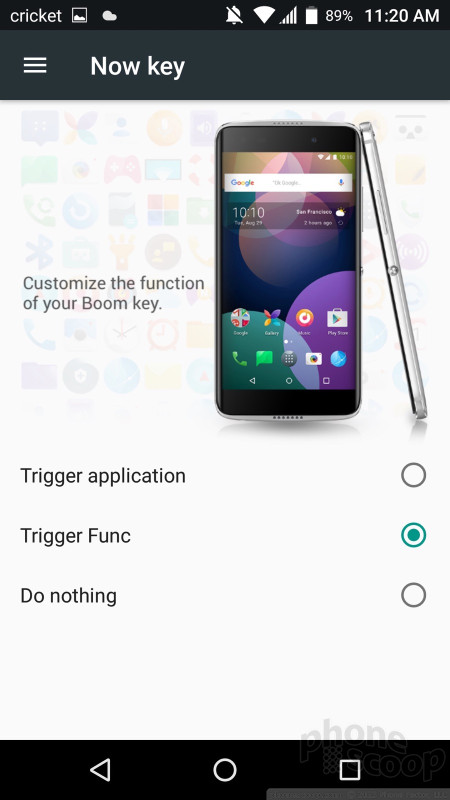



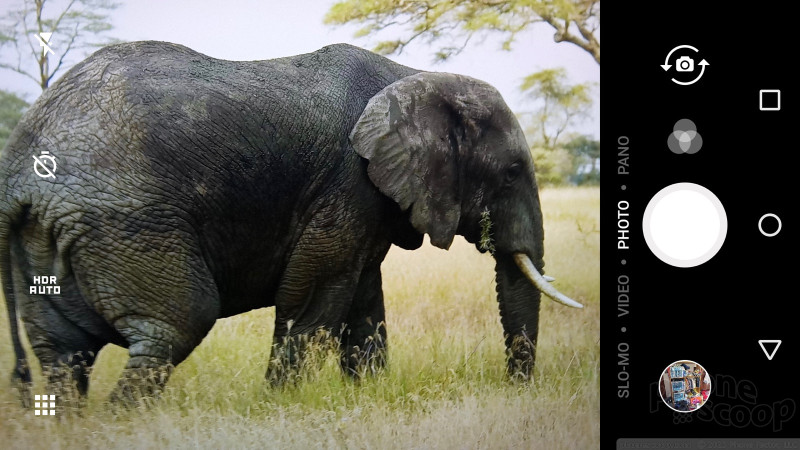






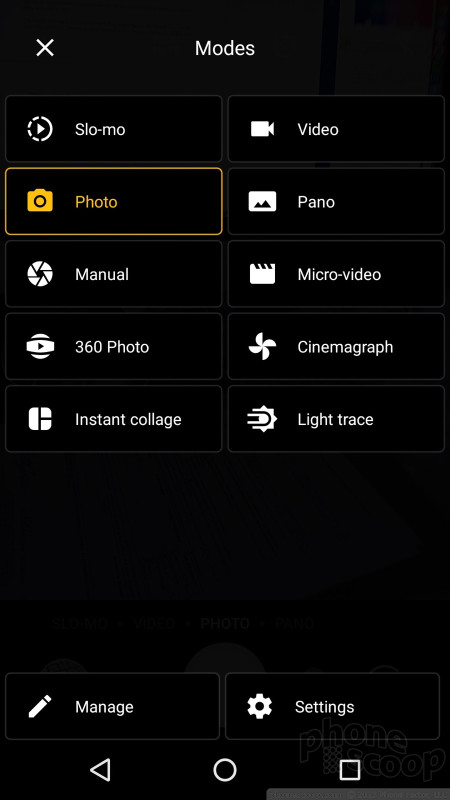




























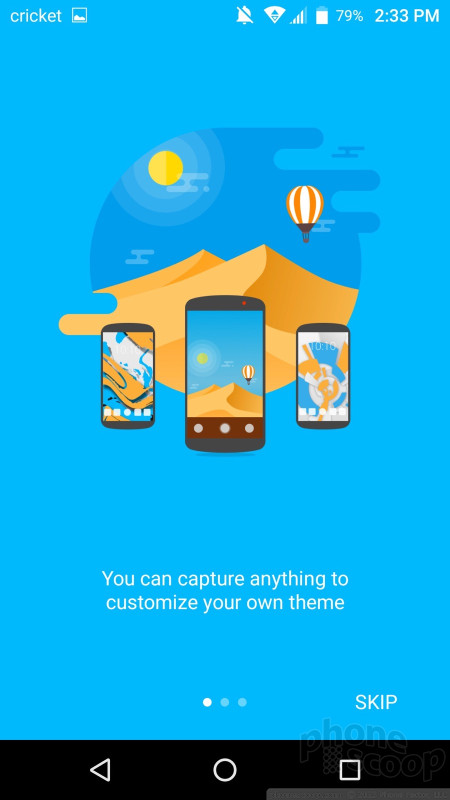









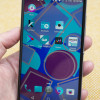 Hands On with the Alcatel Idol 5 for Cricket
Hands On with the Alcatel Idol 5 for Cricket
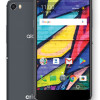 Alcatel Idol 5 Offers a Premium Design for $200
Alcatel Idol 5 Offers a Premium Design for $200
 iPhone 15 Series Goes All-In on USB-C and Dynamic Island
iPhone 15 Series Goes All-In on USB-C and Dynamic Island
 Samsung Puts its Best Camera Yet in the Galaxy S23 Ultra
Samsung Puts its Best Camera Yet in the Galaxy S23 Ultra
 Asus ROG Phone 7 is a Gaming Powerhouse
Asus ROG Phone 7 is a Gaming Powerhouse
 Alcatel Idol 5
Alcatel Idol 5










